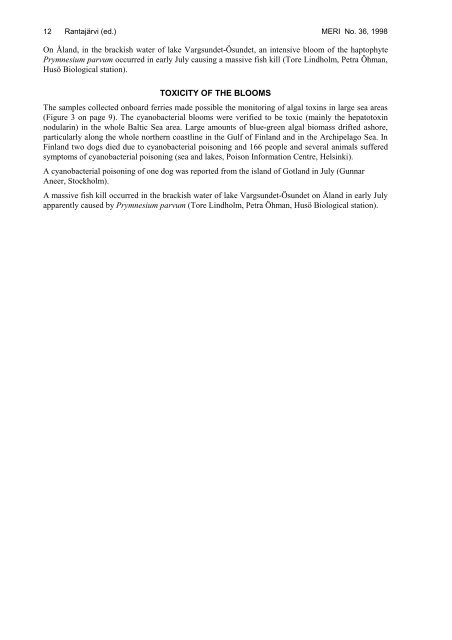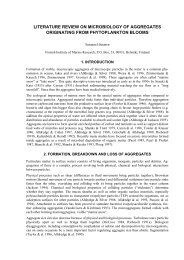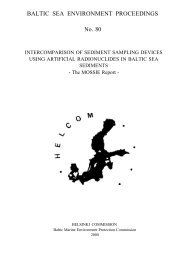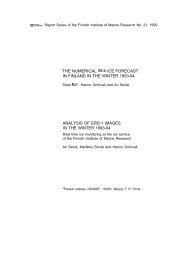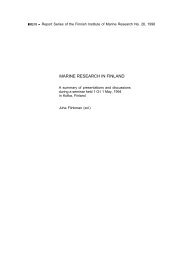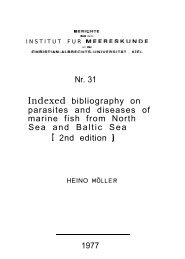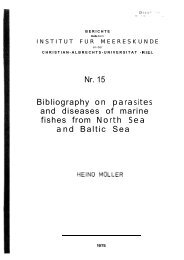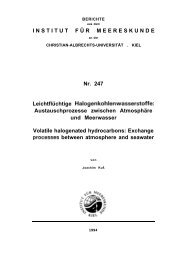Leväkukintatilanne Suomen merialueilla ja varsinaisella Itämerellä
Leväkukintatilanne Suomen merialueilla ja varsinaisella Itämerellä
Leväkukintatilanne Suomen merialueilla ja varsinaisella Itämerellä
Create successful ePaper yourself
Turn your PDF publications into a flip-book with our unique Google optimized e-Paper software.
12<br />
Rantajärvi (ed.) MERI No. 36, 1998<br />
On Åland, in the brackish water of lake Vargsundet-Ösundet, an intensive bloom of the haptophyte<br />
Prymnesium parvum occurred in early July causing a massive fish kill (Tore Lindholm, Petra Öhman,<br />
Husö Biological station).<br />
TOXICITY OF THE BLOOMS<br />
The samples collected onboard ferries made possible the monitoring of algal toxins in large sea areas<br />
(Figure 3 on page 9). The cyanobacterial blooms were verified to be toxic (mainly the hepatotoxin<br />
nodularin) in the whole Baltic Sea area. Large amounts of blue-green algal biomass drifted ashore,<br />
particularly along the whole northern coastline in the Gulf of Finland and in the Archipelago Sea. In<br />
Finland two dogs died due to cyanobacterial poisoning and 166 people and several animals suffered<br />
symptoms of cyanobacterial poisoning (sea and lakes, Poison Information Centre, Helsinki).<br />
A cyanobacterial poisoning of one dog was reported from the island of Gotland in July (Gunnar<br />
Aneer, Stockholm).<br />
A massive fish kill occurred in the brackish water of lake Vargsundet-Ösundet on Åland in early July<br />
apparently caused by Prymnesium parvum (Tore Lindholm, Petra Öhman, Husö Biological station).


